What is a Product Owner? Real insight from ex-dev, now Scrum Master and Product Owner
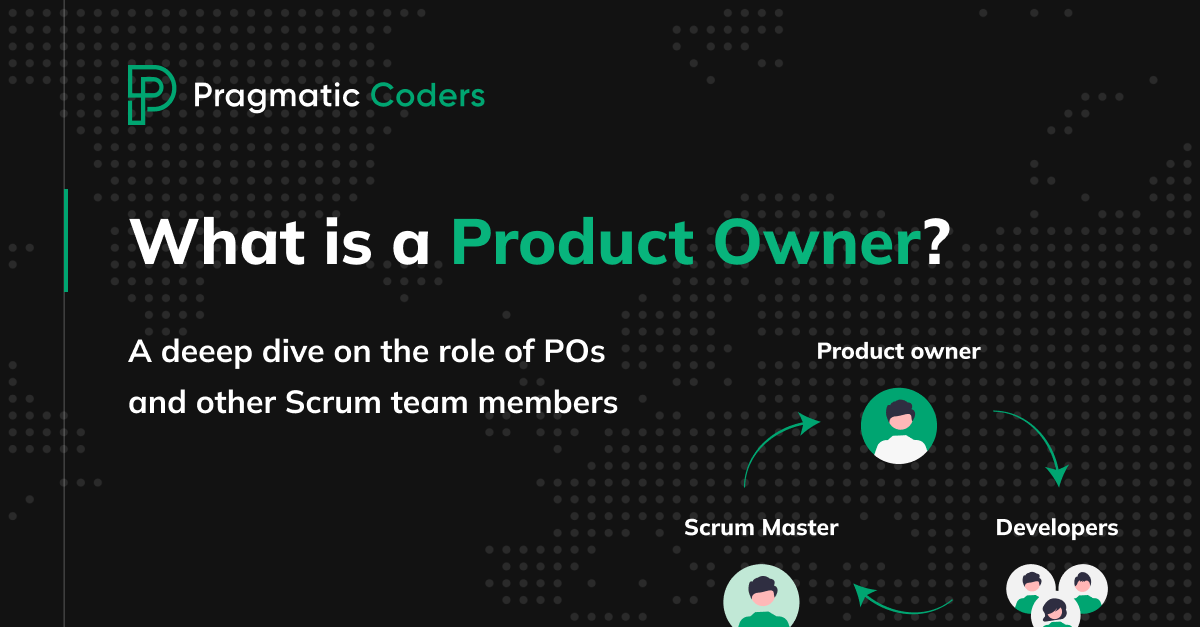
In software development, agility is key, and Scrum is the game’s name. At the heart of any successful Scrum team are Product Owners.
But what exactly are they, and what do they do?
As someone who’s traveled the path from Developer to Scrum Master to Product Owner, I’m uniquely qualified to shed light on this crucial role. Join me as I share my insights on being a successful Product Owner in a Scrum team.
In this article, we will thoroughly explore:
- what an Agile team is, who it consists of, and what the team members’ roles and key responsibilities are;
- how they participate in the product development process, and how they perceive the role of a Product Owner;
- what the Product Owner is exactly responsible for.
Ready?
My story. From mining technician to Product Owner
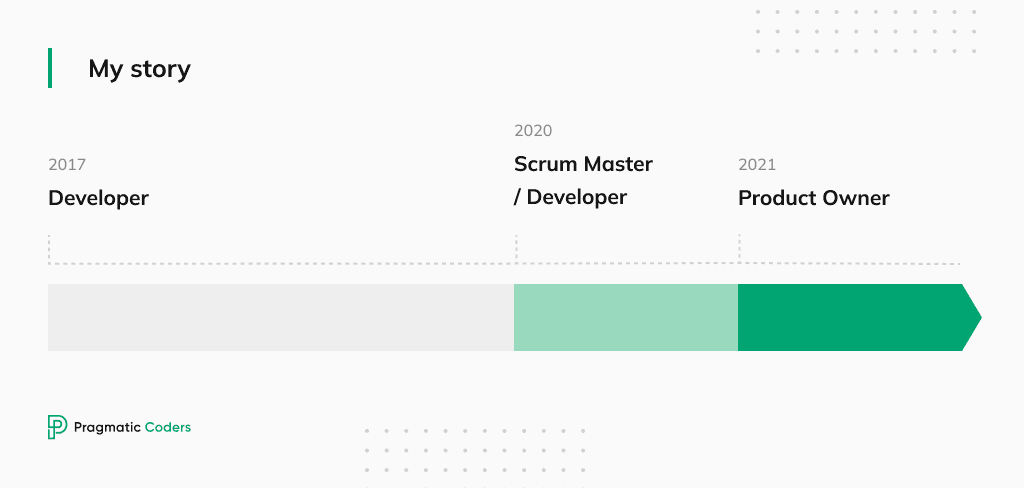
Before we get down to the topic, let me briefly introduce myself.
I’m a 40-year-old former mining technician & exploration geophysics engineer. I worked in the profession for ten years, then I quit.
In 2017 I started working at Pragmatic Coders, and I became a Developer fortunate enough to come across a great team. After working on a project for three years, we realized that we needed to understand the organizational processes better and underwent Scrum training.
As I delved deeper into the topic, my interest in it grew, and I was offered the opportunity to take on the role of Scrum Master alongside my current position as a Developer. As the Scrum Master, I oversaw our project’s processes and delivery approach. Eventually, the team recognized my ability to communicate with clients and suggested that I take on the Product Owner role.
According to the Gallup Test, my top qualities are Individualization, Learner, and Strategist. Inspired by these results, I decided to explore my options and see if I could apply these qualities to a new role. In late 2021, I was given a chance to become a Product Owner.
Now that I am a Product Owner myself, I have gained new insights into this role. By synthesizing my previous experiences and my current perspective, I can provide a comprehensive understanding of what it truly means to be a Product Owner. More on it below 👇
What are Agile and Scrum?
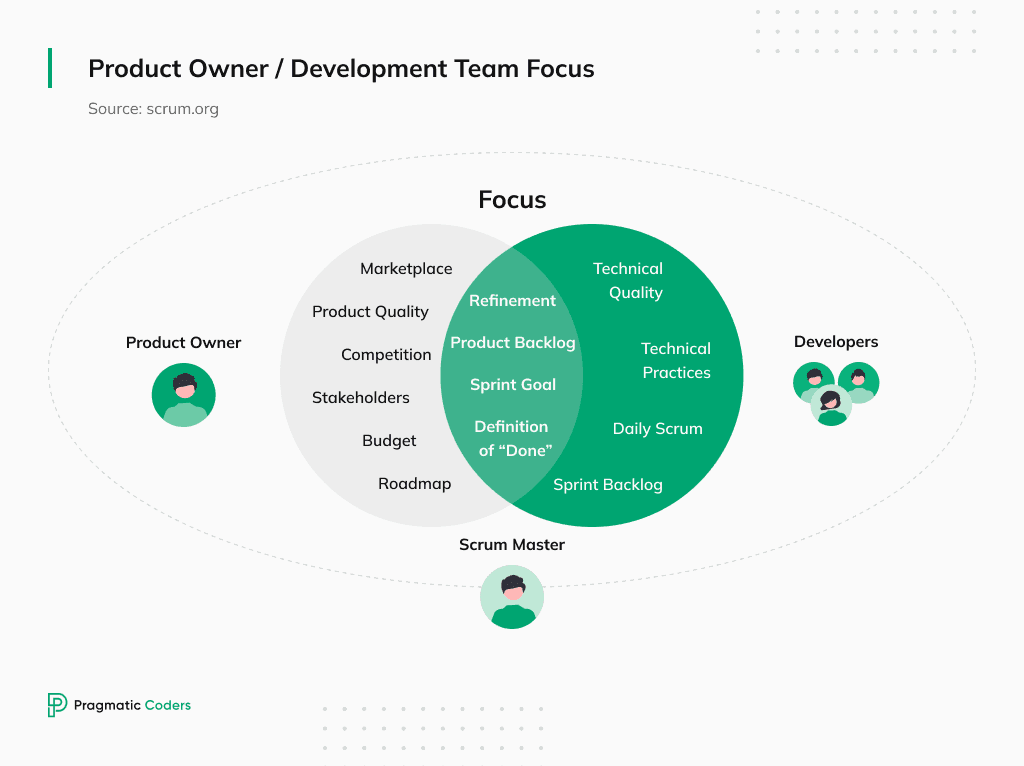
I’ll talk about what I mentioned above in just one second, but let’s start from the basics to ensure we’re on the same page.
Scrum and Agile are both approaches to software development that emphasize flexibility, collaboration, and customer satisfaction. Agile is a broader methodology encompassing several approaches to software development, while Scrum is a specific framework within the Agile methodology.
Scrum involves a small, cross-functional team that works together to deliver high-quality products. The Scrum team consists of Scrum team members (Developers and Testers) Scrum Master, and a Product Owner. They work in short, iterative sprint cycles, typically lasting one to four weeks.
Agile Scrum team roles and responsibilities
To better understand a Product Owner’s responsibilities, we must first discuss the Scrum team members’ key roles and get a grasp of how they perceive the Product Owner’s job.
Development team
“Scrum team members” we call Developers, Testers, and other professionals responsible for delivering the work that the Product Owner has prioritized.
The team members are self-organizing and cross-functional, meaning they have all the necessary skills to deliver high-quality software products.
They work closely with each other and with the Scrum Master to ensure that the work is completed on time and to a high standard.
Scrum Master
The Scrum Master ensures that the Scrum team follows the Scrum process and works effectively.
They facilitate meetings and communication within the team, remove any obstacles hindering its progress, and ensure that the team adheres to the Scrum framework.
Product Owner (PO)
The Scrum Product Owner (PO) is responsible for defining and prioritizing the work that needs to be done by the Scrum team.
They work closely with stakeholders to understand their needs and ensure that the team delivers value to the customer.
Product Owners are also responsible for ensuring that the team is working on the essential features and that the product backlog is maintained correctly.
Product development process
Now that we’ve settled the common ground let’s discuss the product development process. If I were to present the process visually, it would take a form of a pyramid looking like this:
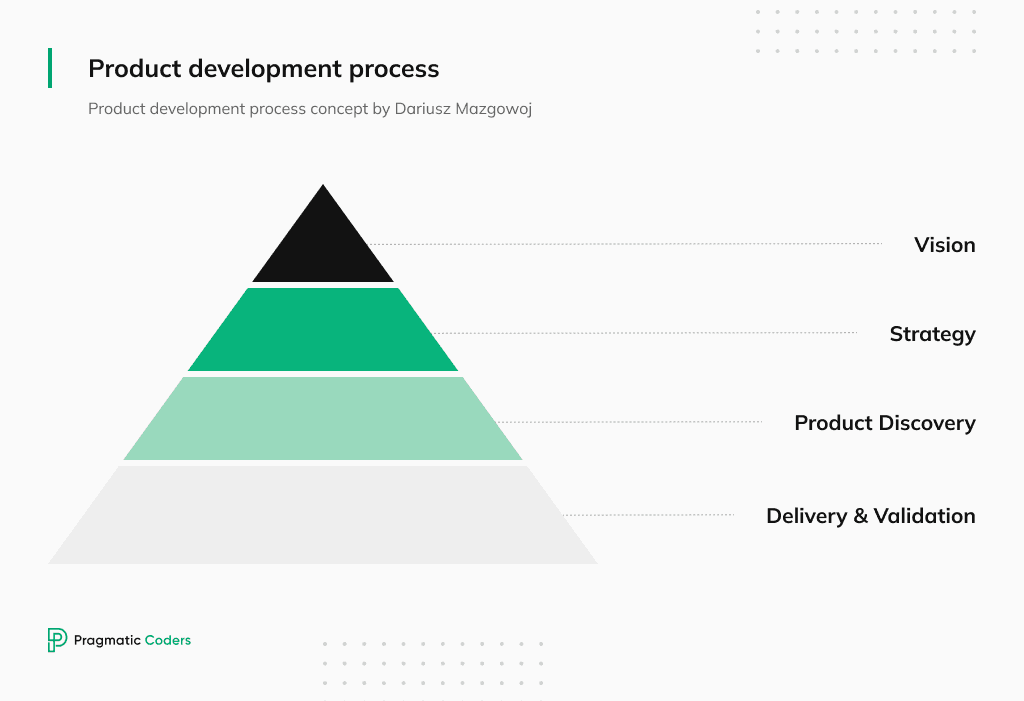
The process starts at the top of the pyramid; when building a product, you must first establish the vision and the strategy. The next phase, Product Discovery, is where the excitement begins as you explore new opportunities and product ideas. Finally, once you have the product solution, you can develop and validate it.
The development process involves the joint work of Developers, Scrum masters, and Product Owners. However, each group’s engagement level varies depending on the pyramid stage. Hence, they all have their own needs and requirements toward the person defining their work – the Product Owner.
Development team’s role. What is a Developer’s perspective on the role of a Product Owner?
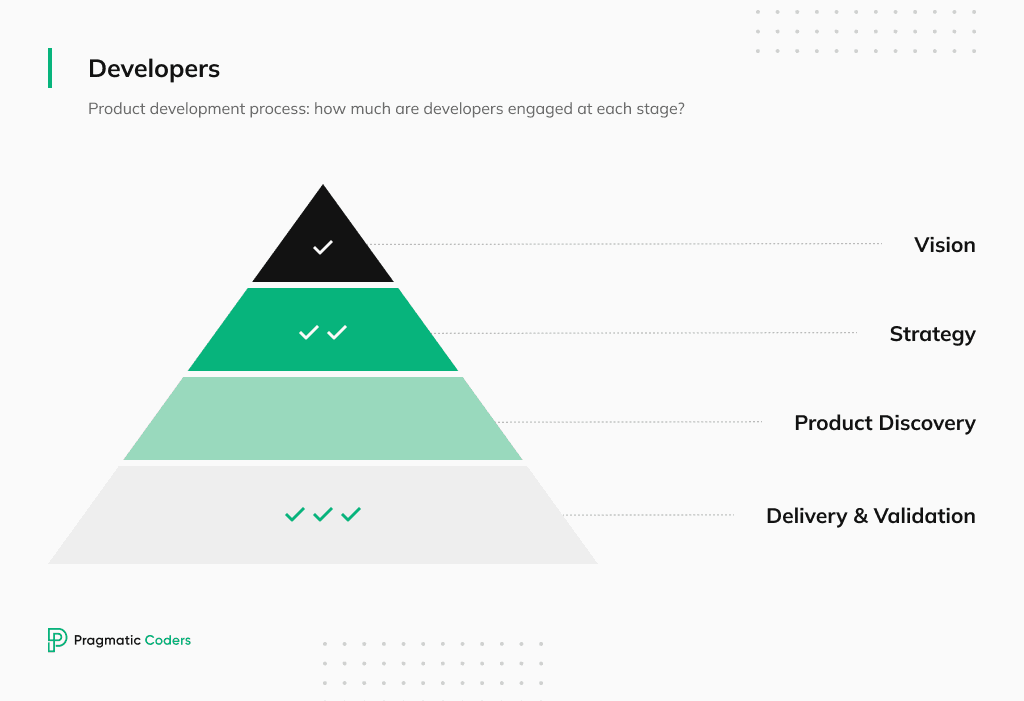
Recalling the memories of my “Developer era,” I can remember my main desire was to comprehend the tasks assigned to me thoroughly. I often felt frustrated when the Acceptance Criteria were unclear, or I was given no target to aim for.
Understanding the delivery process and the client’s plan was also essential. If only we knew what our customers had in mind and what their next steps were, we could have structured the software and architecture differently and come up with better solutions. It was crucial for me as a Developer to understand the product.
Although Developers are mainly engaged in delivering software, they must be familiar with the overall vision & strategy to avoid writing unnecessary code.
So as a Developer, I would like an Agile Product Owner to
- Show us a bit of that strategy;
- Tell me if my work has the desired impact. Are the users or the customers satisfied with the solution I provided? Does the product even work?
Scrum Master’s role. What is a Scrum Master’s perspective on the role of a Product Owner?
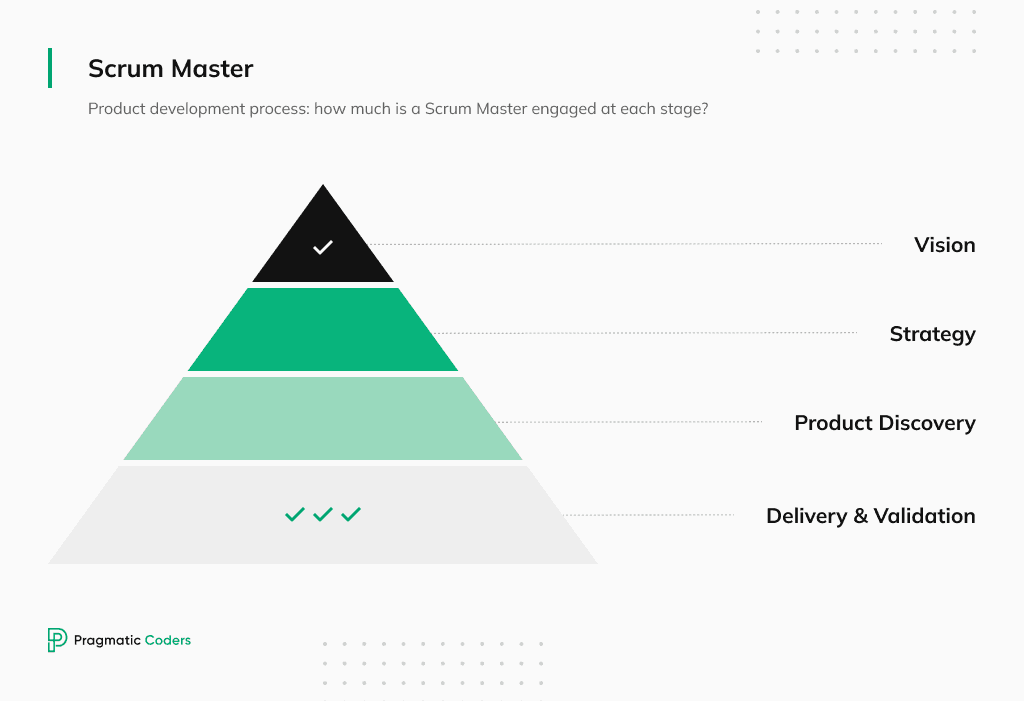
A Scrum Master’s primary focus is in the delivery & validation area, where they ensure proper product backlog management, including effectively prioritizing tasks and distinguishing between what’s essential and what’s not. This, in turn, contributes to the delivery process.
As you may recall, in 2020, I was a Scrum Master while working as a Developer part-time. Back then, my responsibility as a Scrum Master was to ensure that the Product Owner was transparent about the vision and the product goal. This way, everyone could be on the same page and work towards the same objectives.
Apart from that, I was there to educate and support the team. The Scrum Guide states that the Product Owner should focus on maximizing value, and it was my responsibility to encourage them to do so.
Product owner’s role. What is a Product Owner’s perspective on the role of a Product Owner?
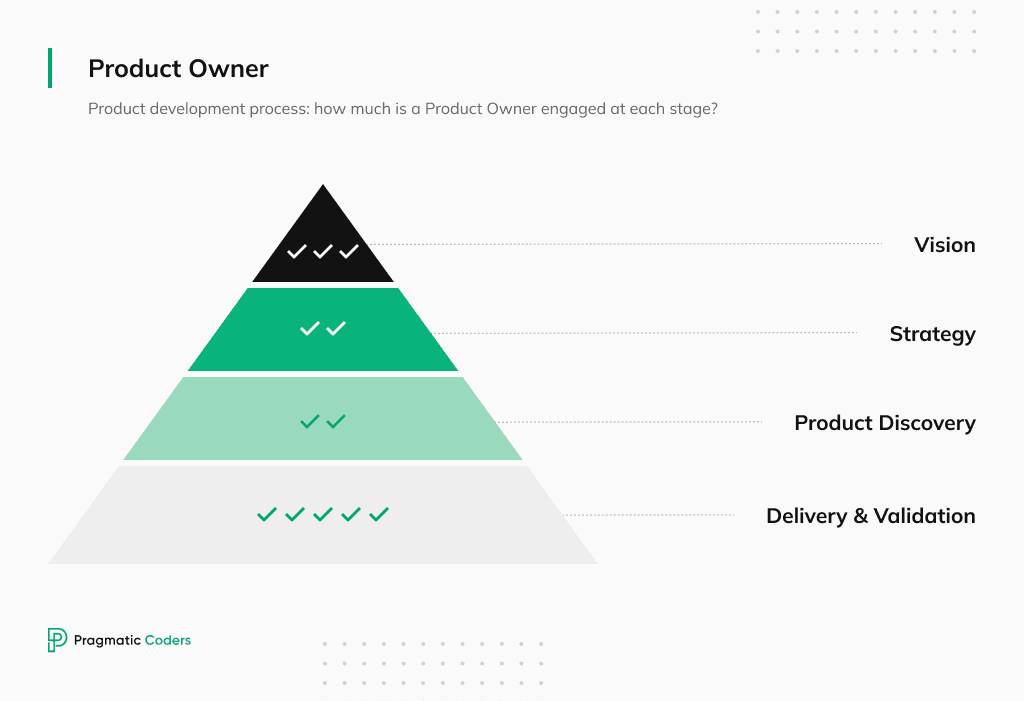
A Product Owner is a glue that holds together the entire Scrum team, doing what they can to ensure a product’s success. They are engaged in every phase of the product development process.
Vision
Having a clear product vision is crucial, and a Product Owner must ensure their client is not creating a product that doesn’t have one. It helps us prioritize tasks, engage in discussions with customers and the market, and anticipate and respond to changes. If something changes and it doesn’t align with the product vision, we need to understand why and consider revising the vision if necessary.
Strategy
Product Owners’ primary responsibility is to understand how to deliver a successful product and win the market. The strategy represents a path of intermediate goals, which should lead us in the most optimal way to success. PO uses all available knowledge to define strategy steps and metrics associated with the predefined goals.
Product Discovery
Product discovery is a continuous process of discovering needs and opportunities related to a product. The role of a Product Owner is to lead the direction of the discovery with close cooperation with UX researchers and business and technical leads. A PO analyzes outcomes from research, looking for opportunities and selecting the most valuable ones. Good discovery can improve the product from both business and user perspectives.
Delivery & Validation
Maximizing value is the primary responsibility of a Product Owner and can be achieved through simplification and prioritization of current work, as well as through product discovery.
Validation is measuring work outcomes mainly by the metrics associated with the product or individual processes/functionalities. The Product Owner is accountable for using the empirical data to inform their decision-making for the subsequent stages of product development.
What are Product Owners responsible for?
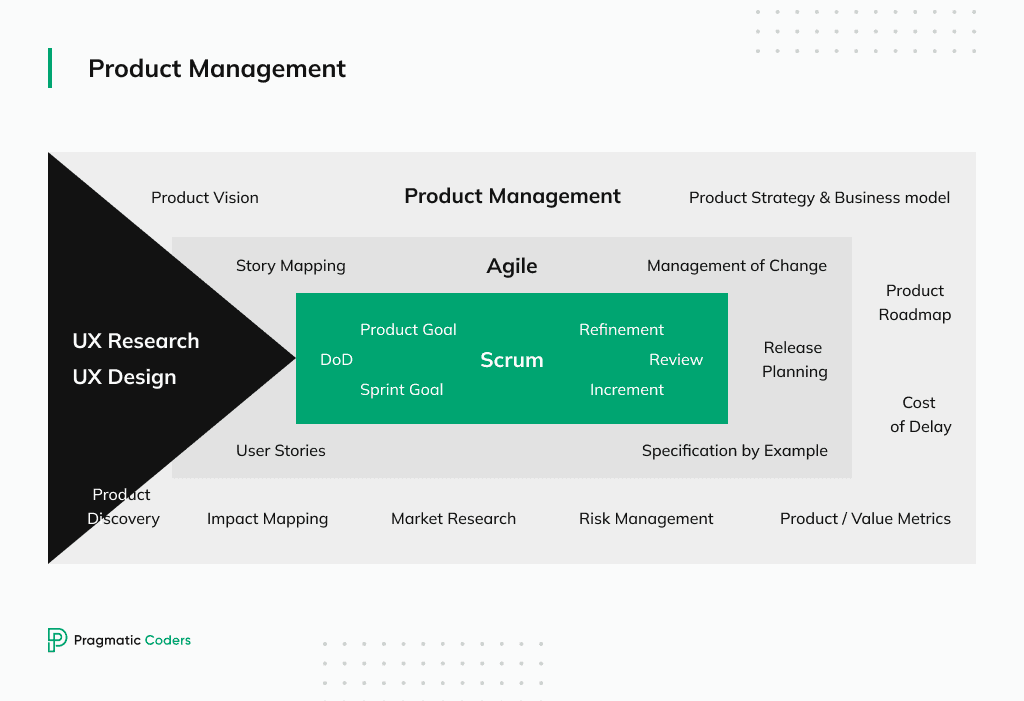
We’ve talked generally about the role of a Product Owner in a Scrum team.
As you can see in the infographic above, a Product Owner’s job revolves around three areas: general product management, product management according to the Agile approach, and Scrum. A Product Owner also cooperates closely with UX researchers to identify and understand user expectations.
The graph might seem slightly intimidating, but don’t worry; we’ll go through it in more detail in just a second. I’ll also draw your attention to the most critical aspects of a Product Owner’s responsibilities to ensure everything is clear.
BTW, if you feel overwhelmed by the number of new terms, check out our Startup Glossary, where we gathered together 80+ startup-related terms and definitions.
Product vision
A clear vision and delivery plan are crucial in the early stages of a product. In my experience, it’s vital to establish the product vision first and communicate it effectively with the customer before diving into a product strategy (your long-term plan for the product’s success), business models, or product discovery.
Without a clear understanding of the vision and where we’re headed, it becomes difficult to proceed with product ownership. Therefore, at the product launch stage, it’s essential to have a well-defined product backlog and a user story map, along with a clear vision, to ensure successful product ownership. The vision and delivery aspects are critical to the product’s success.
Product Discovery
One of a Product Owner’s primary responsibilities is leading product discovery activities. The process could take the form of a product discovery workshop session.
A product discovery workshop is a collaborative and interactive process that helps teams define, prioritize, and validate ideas for new products or features. It is a structured approach that brings together key stakeholders, including Product Owners, Designers, Developers, and subject matter experts, to explore customer needs, pain points, and behaviors.
The workshop typically involves a series of exercises and activities, for example, user story mapping, user interviews, impact mapping, or competitive analysis, to generate insights and ideas. The workshop’s outcome is a shared understanding of the problem space, a set of prioritized features or solutions, and a roadmap for executing those solutions.
Such a session is often preceded by market research and UX research.
Building a product roadmap
A product roadmap is essential for managing, executing, and planning a product while providing the ability to manage changes effectively.
A product roadmap is a high-level visual representation that outlines a product’s goals, objectives, and strategic initiatives over a specific period. It includes details such as feature prioritization, release planning, and timelines for writing user stories and delivering new features and updates to the product.
This tool embodies an Agile approach and enables transparency of activities. I have personally experienced the negative consequences of being non-transparent and realized the paramount importance of transparency. This attribute is closely associated with delivery and validation, although it extends to how the client and Developers perceive the product.
Product/Value Metrics
Metrics (for example, cost of delay) are super important in a Product Owner’s work. They provide objective data that can inform decision-making and support key functions such as risk management or the management of change.
Working in Scrum
As a critical member of the Agile development team, the Product Owner is responsible for ensuring that the team is aligned on the Definition of Done (DoD) for each product increment.
The Product Owner works closely with the Scrum Master to facilitate the Sprint Review, during which the team demonstrates the completed work and receives feedback from stakeholders.
The Product Owner also collaborates with the team to define the Product Goal and Sprint Goal and refine the Product Backlog to achieve those goals.
Throughout the development process, the Product Owner continuously evaluates progress against the Product Goal and guides the team in delivering high-quality increments that meet customer needs and deliver business value.
Conclusions
I hope this article helped you better understand what product owners are and what they do.
If you’d like to learn more about product management, check out our other article on this topic 👇


